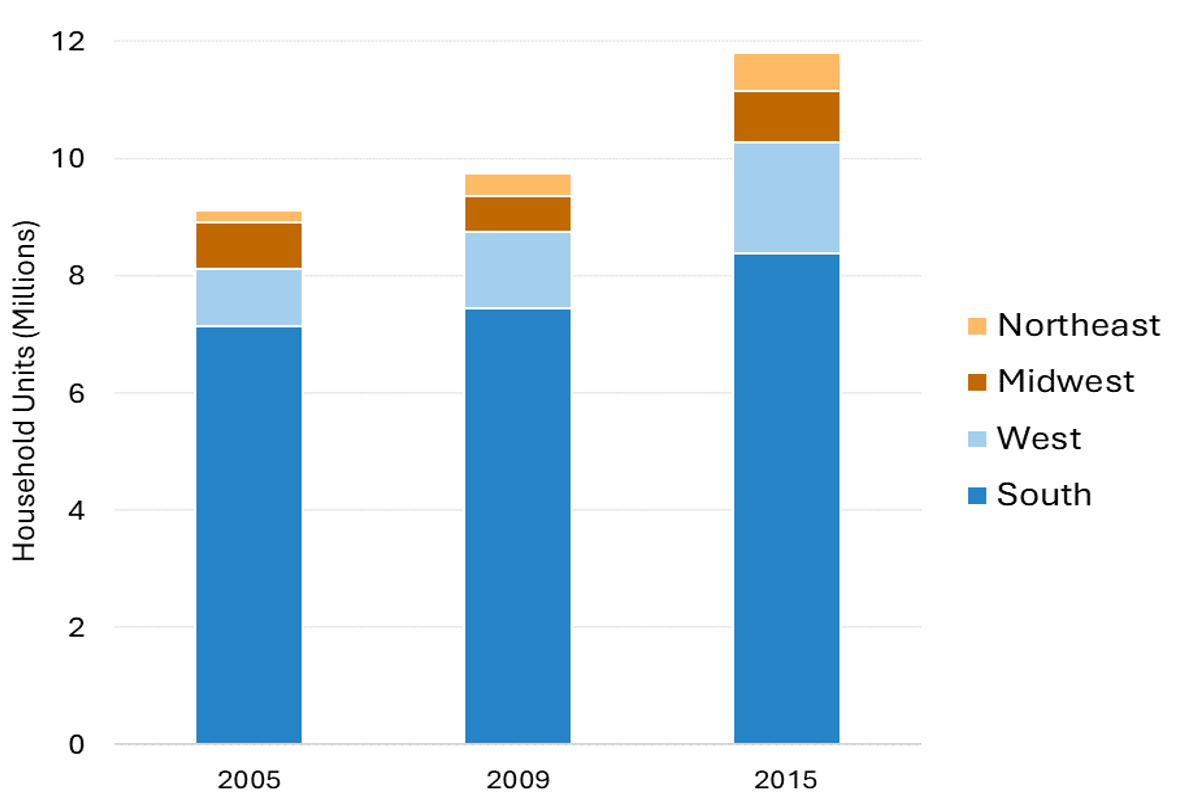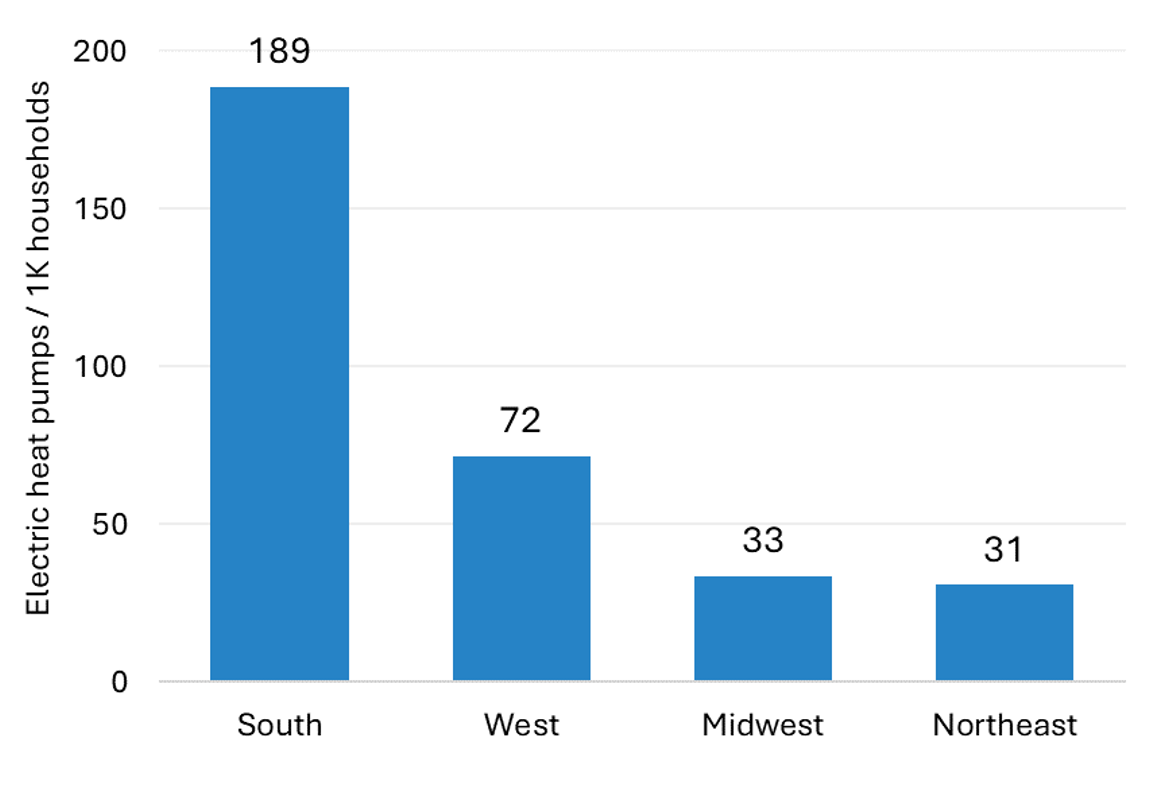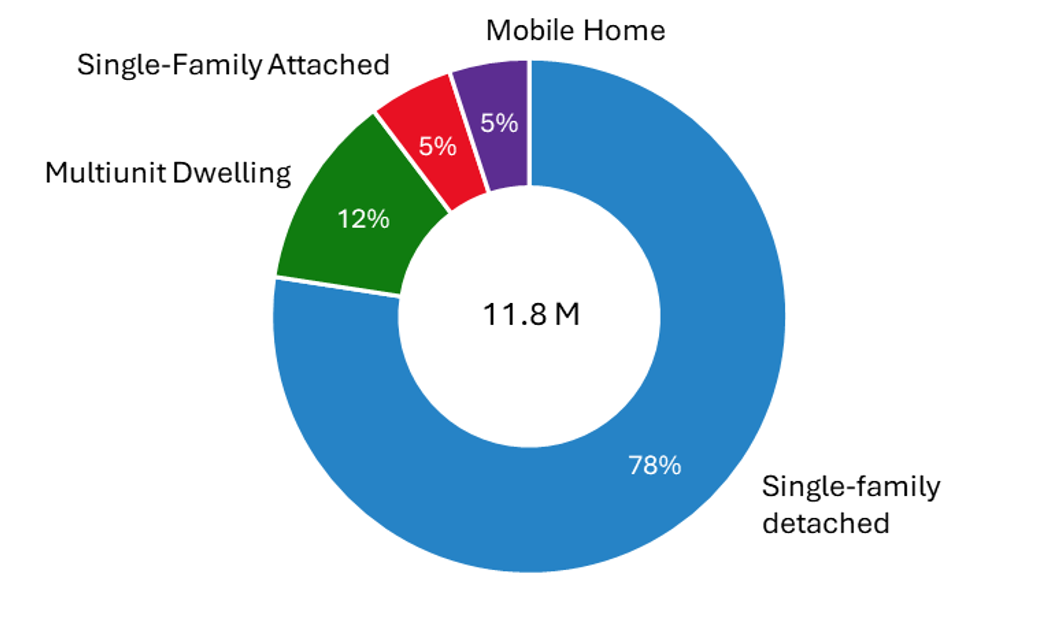
Electric heat pumps have become an increasingly popular option for efficient heating and cooling in residential homes across the country. In many cases, replacing the existing fossil fuel based heating system with an electric heat pump can be financially and environmentally beneficial. According to IOP Science, mild and coastal climates are the most advantageous regions for air source heat pumps (ASHPs), as they operate most efficiently in those environments. Nonetheless, heat pumps can perform well across nearly all climate zones in the United States thanks to recent and ongoing advances in cold-climate ASHP technology. All told, there are an estimated 16.7 million single-family homes that could benefit financially from switching to electric air source heat pumps.
Figure 1: Households with Electric Heat Pumps for Primary Heating, By Census Region (2005-2015)

Source: Atlas Buildings Hub
Note: Includes air source and ground source heat pumps
Figure 2: Electric Heat Pumps as Primary Heating per Thousand Housing Units, by Census Region (2015)

Source: Atlas Buildings Hub
Note: Includes air source and ground source heat pumps
According to Buildings Hub, 9.1 million housing units across the United States used electric heat pumps for primary space heating in 2005, with that number jumping to almost 11.8 million in 2015. Over those ten years, the South had the highest per capita concentration of electric heat pumps of any census region, with 189 electric heat pumps per thousand households in 2015. Moreover, nearly 20 percent of homes in the South used electric heat pumps for primary space heating in 2015, far surpassing all other regions in the country in terms of housing share. As shown in Figure 1, the South witnessed the largest number of primary electric heat pumps adoptions between 2005 and 2015, an increase of 1.25 million housing units over the decade.
Conversely, in both 2005 and 2015, the Northeast region had the fewest residential electric heat pumps deployed of any census region. However, the region demonstrated significant market growth over the last decade, with almost 440,000 more Northeastern households reporting primary electric heat pumps in 2015 compared to a decade earlier, a 200 percent increase. As seen in Figure 2, the number of Northeastern households with primary electric heat pumps reached 31 units per thousand homes in 2015, up from 10 a decade earlier. The West also saw a substantial change in electric heat pump deployments over the decade, rising from 41 per thousand households in 2005 to over 71 in 2015, a 75 percent increase. Of all census regions, the West ranked a distant second behind the South in per capita electric heat pump deployments in 2015. Lastly, the Midwest census region experienced the smallest decadal change, with only an additional 96,000 households reporting primary electric heat pumps in 2015 compared with 2005, or an increase of just 12 percent over 10 years.
Across the country, single-family detached homes are and have been the most common type of residence to utilize electric heat pumps. According to Buildings Hub, as of 2015, over 75 percent of deployed residential electric heat pumps were in single-family detached homes, down from almost 81 percent in 2005 (Figure 3). Apartment buildings accounted for about 13.2 percent of total installed residential electric heat pumps in 2015, while they accounted for about 10.2 percent in 2005. Other notable home types for electric heat pumps are single-family attached houses, as well as mobile homes, which each accounted for about five percent of deployed systems in 2015.
Figure 3: U.S. Electric Heat Pump Deployments by Housing Type (2015)

Source: Atlas Buildings Hub
Note: Includes air source and grounds source heat pumps
As the United States continues to electrify home heating equipment and reduce reliance on fossil fuels, residential electric heat pump adoption will likely accelerate, especially as policy support grows. Millions of residences across the country have installed electric heat pumps and realized the financial and environmental benefits these systems can achieve. Millions more are able to do the same, especially as greater incentives come online. Across the country, electric heat pumps can not only save on home heating and cooling costs, but they can also provide an environmental benefit as the nation works to reduce emissions and combat climate change.



